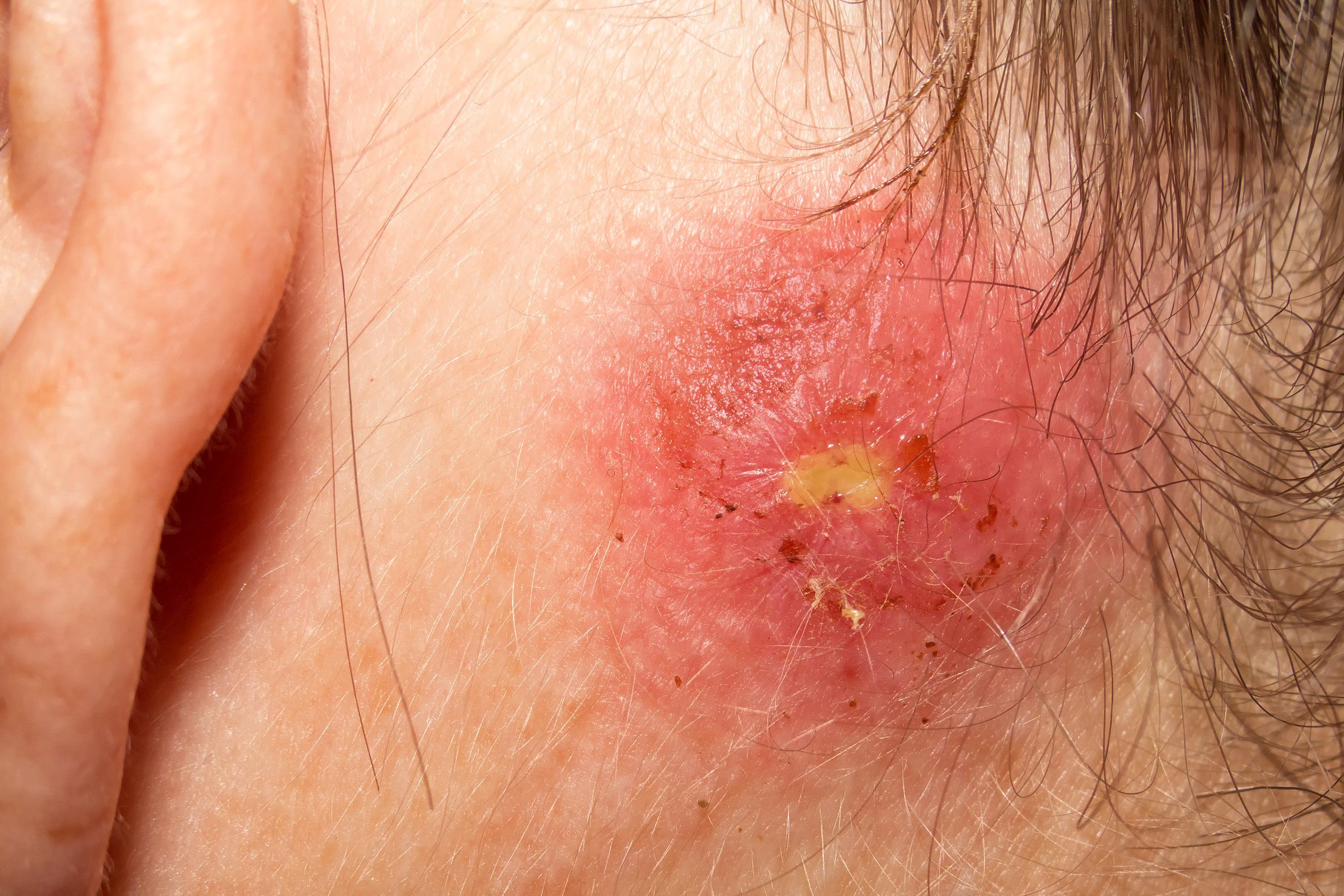What Is a Staph Infection?
A staph infection is caused by a Staphylococcus (or “staph”) bacteria. Actually, about 25% of people normally carry staph in the nose, mouth, genitals, or anal area, and don’t have symptoms of an infection. The foot is also very prone to picking up bacteria from the floor. The infection often begins with a little cut, which gets infected with bacteria. This can look like honey-yellow crusting on the skin.
These staph infections range from a simple boil to antibiotic-resistant infections to flesh-eating infections. The difference between all these is the strength of the infection, how deep it goes, how fast it spreads, and how treatable it is with antibiotics. Antibiotic-resistant infections are more common in North America, because of our overuse of antibiotics.
More evidence is currently emerging to show that Staphylococcus, particularly Staphylococcus aureus, can colonize the reproductive systems and affect their structure and function. Staphylococcal infection has become one of the most common causes of infertility in both males and females.
One type of staph infection that involves skin is called cellulitis and affects the skin’s deeper layers. It is treatable with antibiotics. This type of infection is very common in the general population — and more common and more severe in people with weak immune systems. People who have diabetes or weakened immunity are particularly prone to developing cellulitis.
What Are the Symptoms of a Staph Infection of the Skin?
Staph cellulitis usually begins as a small area of tenderness, swelling, and redness. Sometimes it begins with an open sore. Other times, there is no obvious break in the skin at all. The signs of cellulitis are those of any inflammation — redness, warmth, swelling, and pain. Any skin sore or ulcer that has these signs may be developing cellulitis. If the staph infection spreads, the person may develop a fever, sometimes with chills and sweats, as well as swelling in the area. Other staph infections of the skin include impetigo, a painful rash that is contagious, boils, and in babies and young children, staphylococcal scalded skin syndrome, which causes rash, blisters, and fever.
Can Flagyl Treat Staph Infection?
Flagyl is a brand of metronidazole used to treat parasitic infections including Giardia infections of the small intestine, amebic liver abscess, and amebic dysentery (infection of the colon causing bloody diarrhea), bacterial vaginosis, trichomonas vaginal infections, and carriers of trichomonas (both sexual partners) who do not have symptoms.
What’s the Treatment for a Staph Infection?
According to a study, Staphylococcus aureus develops resistance very quickly and successfully to different antimicrobials over a period of time. The highest frequency of S. aureus occurred with susceptibility to antimicrobial agent Levofloxacin (100%) followed by Ciprofloxacin (78.9%) while the least was Penicillin (7.1%). Antibiotics are used to treat staph infections. But there’s been a gradual change in how well these antibiotics work. While most staph infections used to be treatable with penicillin, stronger antibiotics are now used.
What is the best antibiotic for staph infection?
Poor choice of antibiotics can make methicillin-resistant Staphylococcus aureus (MRSA) infection worse compared to no treatment. The findings could have important clinical implications, given that the lives of many MRSA-infected patients are put at risk by initial inappropriate antibiotic treatment with beta-lactam antibiotics. Antibiotics commonly prescribed to treat staph infections include certain cephalosporins such as cefazolin; nafcillin or oxacillin; vancomycin; daptomycin (Cubicin); telavancin (Vibativ); or linezolid (Zyvox).
How long does it take to cure Staphylococcus aureus?
S. aureus bacteremia should be treated for at least 14 days to prevent relapse.
Prevention
These commonsense precautions can help lower your risk of developing staph infections:
Wash your hands. Careful hand-washing is your best defense against germs. Wash your hands with soap and water briskly for at least 20 seconds. Then dry them with a disposable towel and use another towel to turn off the faucet. If your hands aren’t visibly dirty, you can use an alcohol-based hand sanitizer.
Wash your hands with soap and water regularly, such as before, during, and after making food; after handling raw meat or poultry; before eating; after using the bathroom; and after touching an animal or animal waste.
Keep wounds covered. Keep cuts and abrasions clean and covered with sterile, dry bandages until they heal. The pus from infected sores often contains staph bacteria, and keeping wounds covered will help keep the bacteria from spreading.
Reduce tampon risks. Toxic shock syndrome is caused by staph bacteria. Tampons left in for long periods can be a breeding ground for staph bacteria. You can reduce your chances of getting toxic shock syndrome by changing your tampon frequently — at least every four to eight hours. Use the lowest absorbency tampon you can. Try to alternate tampons with sanitary napkins whenever possible.
Keep personal items personal. Avoid sharing personal items such as towels, sheets, razors, clothing, and athletic equipment. Staph infections can spread on objects, as well as from person to person.
Wash clothing and bedding in hot water. Staph bacteria can survive on clothing and bedding that isn’t properly washed. To get bacteria off clothing and sheets, wash them in hot water whenever possible.
Also, use bleach on any bleach-safe materials. Drying in the dryer is better than air-drying, but staph bacteria may survive the clothes dryer.
Take food safety precautions. Wash your hands before handling food. If food will be out for a while, make sure that hot foods stay hot — above 140 F (60 C) — and that cold foods stay at 40 F (4.4 C) or below. Refrigerate leftovers as soon as possible. Wash cutting boards and counters with soap and water. SEE: Can Flagyl Treat Pneumonia?






